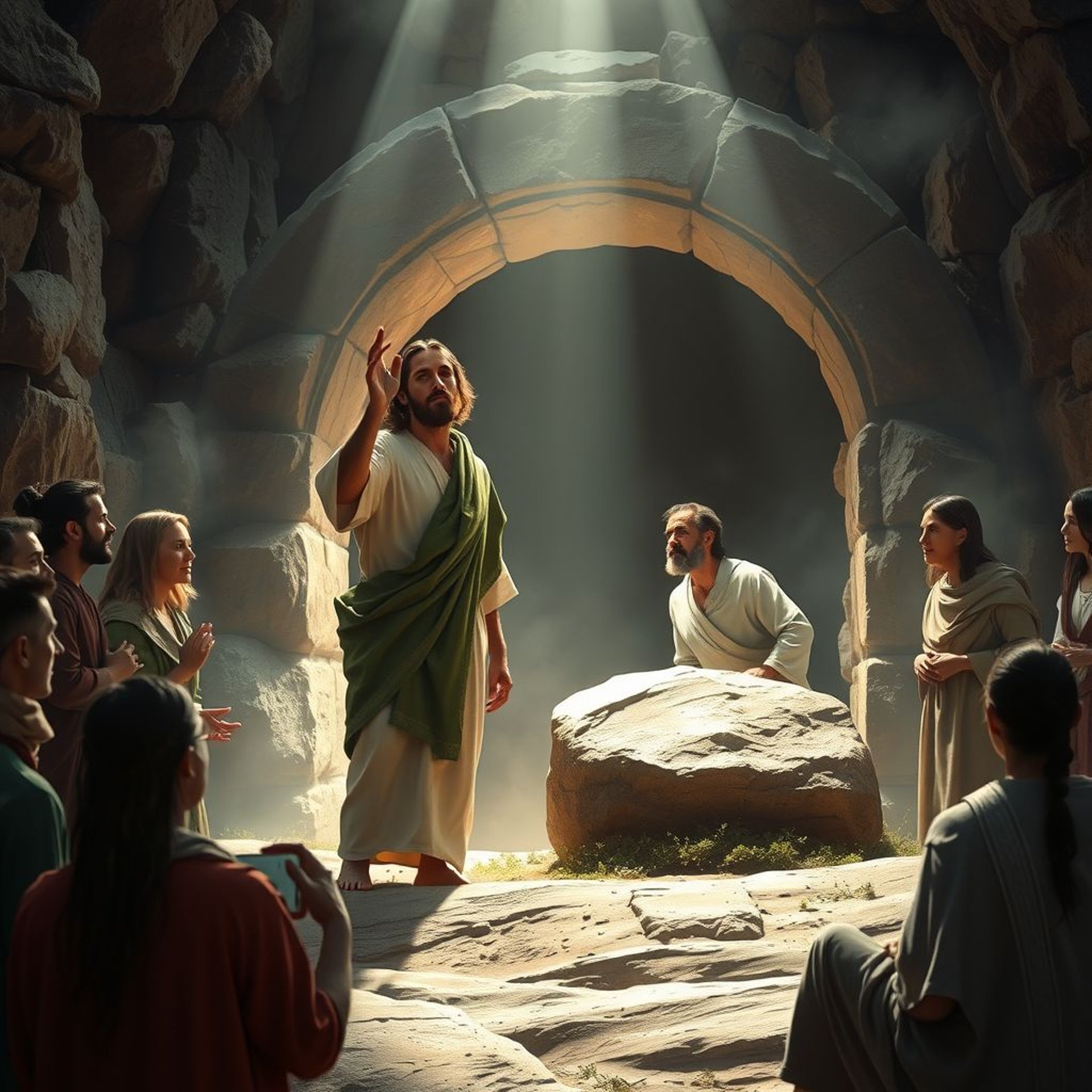
Miracles in Jerusalem(A.D 33)
4. Miracles During the Journey to Jerusalem (A.D 33)
5. Miracles in Jerusalem (A.D. 33)
6. Post-Resurrection Miracles (A.D. 33)
In the context of significant events surrounding Jerusalem in 33 AD, a range of miraculous occurrences attributed to Jesus profoundly illustrate his ministry and its impact on the people of that time. Each miracle serves not only as a supernatural event but also as a testament to his teachings, embodying principles of compassion, faith, and the divine authority he professed.
25. Multiplication of Loaves and Fishes (Matthew 14:13-21): There are miracles like the multiplication of the loaves and fishes that are connected with abundance and divine provision. Found in all four Gospels, this event took place when Jesus was looking for solitude after the death of John the Baptist but was followed by a great crowd. Feeling compassion, Jesus taught and healed. When evening came, the disciples said to him, “Master, others are hungry, and we only have five loaves and 2 fish. What will we do?” In response, Jesus said, "Divide the bread and fish into large baskets." The disciples made what Jesus had asked, and, incredibly, the baskets were full, and everyone ate and left satisfied, with twelve baskets left over. This miracle highlights the concept of sharing and the strength of faith; it demonstrates that even the most modest offerings can result in magnificent effects when blessed and multiplied with the divine.
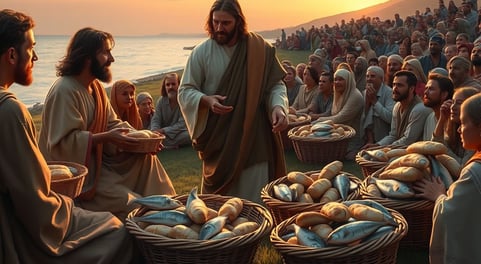

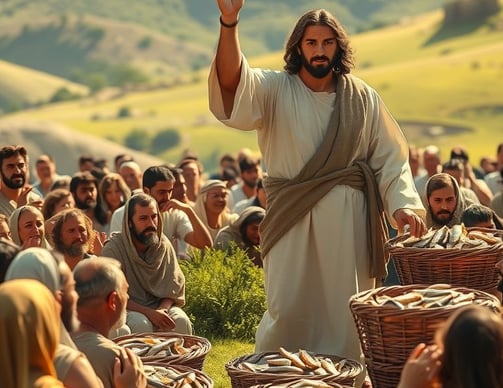

27. Walking on Water (Matthew 14:22-33, Mark 6:45-52, John 6:16-21): Among the most interesting miracles whereby it is clearly seen that Jesus is the power of God is when Jesus walks on water, as recorded by the Gospel of Matthew, Mark, and John. After the miracle of the loaves and fishes, feeding the crowd, Jesus withdrew by himself to pray in the mountain while his disciples crossed by boat, the Galilee sea. While they were on their way, a fierce storm arose, creating waves that threatened to sink the disciples’ boat. And, as fear seized them, they saw a figure walking toward them on the water. The disciples were frightened and thought of seeing a ghost. But Jesus told them, “It is I am"; do not be afraid.” Jesus was walking on water. However, Peter doubted, so Jesus said, “Come to me on the water!” When he followed him out, he walked until fear overcame him, and then he fell, at which point Jesus reached out his hand and saved him, saying, “You of little faith.” This miraculous episode not only points to Jesus’s authority over nature but also demonstrates the nature of faith and confidence in the midst of life’s storms.
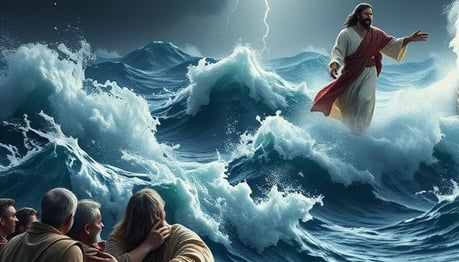

28. Raising of Lazarus (John 11:1-44): One of the key miracles reflected in the Gospel of John, in a small village close to Jerusalem called Bethany, is that of raising Lazarus from the dead. Lazarus was a friend of Jesus who was very sick, so his sisters set out for Jerusalem to warn Jesus. As soon as he heard of Lazarus’ condition, he set out, taking four days to reach Bethany. When arrived, he was already dead. Jesus then went to the place where they had buried him and asked them to remove the stone from the tomb. Jesus then spoke in a loud voice: "Lazarus, get up. Lazarus emerged alive from the tomb, wrapped in grave clothes. This is a promise of hope and eternal life, as illustrated in this statement. So arose the dead man; by the word of the Lord, they are raised up. The act not only displayed Jesus’ power over death but also established the stage for his own resurrection, representing a fundamental element of the Christian faith in life after death.


26. Feeding the 4,000 (Matthew 15:29-39, Mark 8:1-10): In a similar vein, the feeding of the 4,000, reported in Matthew and Mark, follows closely behind the earlier miracle of the loaves and fishes and emphasizes Jesus' compassion beyond the Jewish population, as he performed this miracle among the Gentiles. After teaching a large crowd for three days without any food, Jesus felt sympathy for them, not wanting them to faint on their journey home. The disciples, again concerned about the logistics of feeding so many, questioned how they could provide enough food. Jesus asked them what was available and was presented with seven loaves and a few small fish. After giving thanks, he multiplied the food, and once again, all were fed, leaving several baskets of leftovers. This miracle further highlights Jesus’ ability to meet needs and fill emptiness, whether physical or spiritual
MIRACLES IN JERUSALEM (A.D 33)
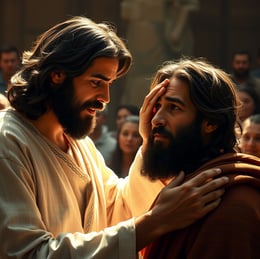

29. Healing a Blind Man in Bethsaida (Mark 8:22-26): The account of a blind man’s healing in Bethsaida serves as another illustration of Jesus’ extraordinary ability to cure physical conditions. This incident not only emphasizes the aspect of physical recovery but also showcases the gradual unfolding of faith. As the Gospel of Mark documented, Jesus took the blind man away from the village, applied saliva to his eyes, and then placed his hands on him. When questioned about his sight, the man responded that he saw figures resembling trees moving. Jesus then touched the man’s eyes a second time, leading to a complete and clear vision. This two-step healing process represents the path toward understanding and belief. It mirrors how individuals, much like the blind man, frequently view their surroundings in a distorted way before achieving a clearer and deeper understanding of truth and reality.

watch the video

watch the video
Contact Us


Want to know more? Our "Question and Answer" area is here to answer your questions and start important conversations.
Faith
Exploring the biblical truth and knowledge.
COMMUNITY
+55 95 98117-7630
© 2024 - 2025. All rights reserved.
Hamillton Rice Street 114 - Boa Vista- RR - BR
